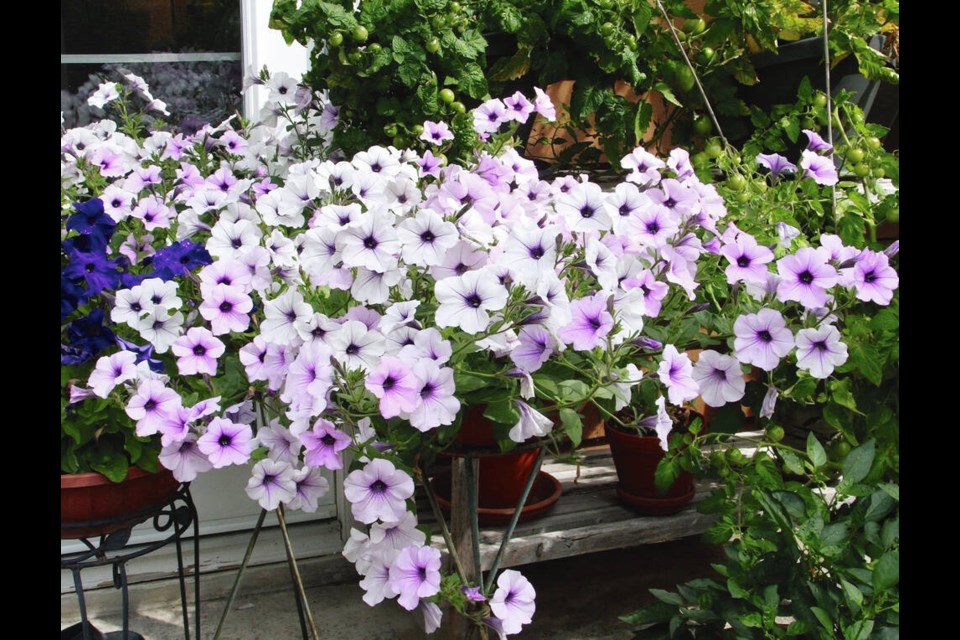Dear Helen: Now that the season for acquiring seeds is upon us, I’m curious to know how you go about choosing varieties to grow. Do you stick to a roster of reliables or do you select mostly new (to you) ones?
S.C.
I do have varieties that I repeat because they have stood up, after years of comparing them to others, as the strongest growing and most productive in my garden’s conditions.
These include Kelsae onion, Caraflex cabbage, Big Beef tomato, Green Arrow pea, Napoli carrot, Sensation cosmos and Tidal Wave Silver petunia.
Depending on what I find in the new print and online catalogues, I’ll select for comparison a variety I find that is similar in description to one of my longstanding favourites. For example, From the past two years, I’ve been delighted with Sun Dipper, a slim staking tomato with draping clusters of small, elongated tomatoes that have a wonderful flavour.
Cruising through the listing of tomatoes in the online Renee’s Garden website, I noticed a grape tomato called Bronze Torch, described as a tall vine bearing cascading clusters of elongated crimson fruits overlaid with bronze-orange stripes. The flavour is described as sweet and delicious. Over a long season the vines produce tomatoes that keep well after picking and are good as snacks, in salads, and halved and roasted with olive oil and garlic. I’ll be trying this tomato alongside Sun Dipper to compare them.
My best patio tomato in recent years has been Little Napoli, a sturdy, compact plant that bears hefty numbers of small Roma tomatoes. I often have enough from two plants to make a nice batch of tomato sauce.
Once again, I found a variety for comparison in the listings of Renee’s Garden, a website I find entirely pleasant and easy to use. It offers a plethora of unusual and intriguing vegetable, flower and herb varieties. Cook books too.
Among Renee’s tomatoes is a container variety called Inca Jewels, described as a delicious Roma type tomato that gives “extra-heavy yields on space-saving plants.” Two potted plants each of Little Napoli and Inca Jewels should provide a useful comparison along with fine eating.
As well as looking for varieties for their comparison value, I look among listings for the year’s new introductions, and also for varieties marked as “Bestsellers” or “Customer Favourites,” as potential for additions to the garden.
Sometimes, long favoured varieties become unavailable. For a number of years I’d been seeking a replacement for Nelson, one of my best carrot varieties. Then, a few years ago, I came across a listing in the William Dam catalogue for Miami, which was described as rivalling Nelson for quality.
Every year since that first Miami seeding, it has proven to be a reliable, easy-growing carrot with the sweet, juicy crunch hoped for in this root vegetable. Miami, along with Napoli, now form the backbone of my carrot patch.
Dear Helen: In the past two years I have had a good harvest of apples. They all looked fine on the outside, but the flesh of many had discoloured lines running through it. What can I do to prevent this problem? I don’t want to use sprays that would harm beneficial insects.
M.W.
The damage you describe indicates apple maggot feeding in the flesh. The adult form is a fly that emerges in early summer. Females pierce the skin of the fruit to lay eggs in July, August and September. The eggs hatch into larvae that make a maze of tunnels as they feed on the flesh.
Monitoring for marks of infestations and physical removal of suspect apples is helpful. Watch for fruit with tiny dimples where eggs have been inserted. Remove and destroy affected apples, along with all fallen fruit.
Pupae over-winter in the soil and leaf litter under and around the fruit trees. Keeping the space at the base of the trunk and in the area under and around the tree cleared of litter is a useful prevention measure.
I’ll be adding another means of protection against the apple maggot this year, in the form of fruit bags for enclosing individual apples once the fruit has set and the clusters have been thinned.
The bags can be found online by typing “fruit protection bags” into a search engine. I made my choice from a list of “Top 10 Best fruit protection bags for fruit trees..”



